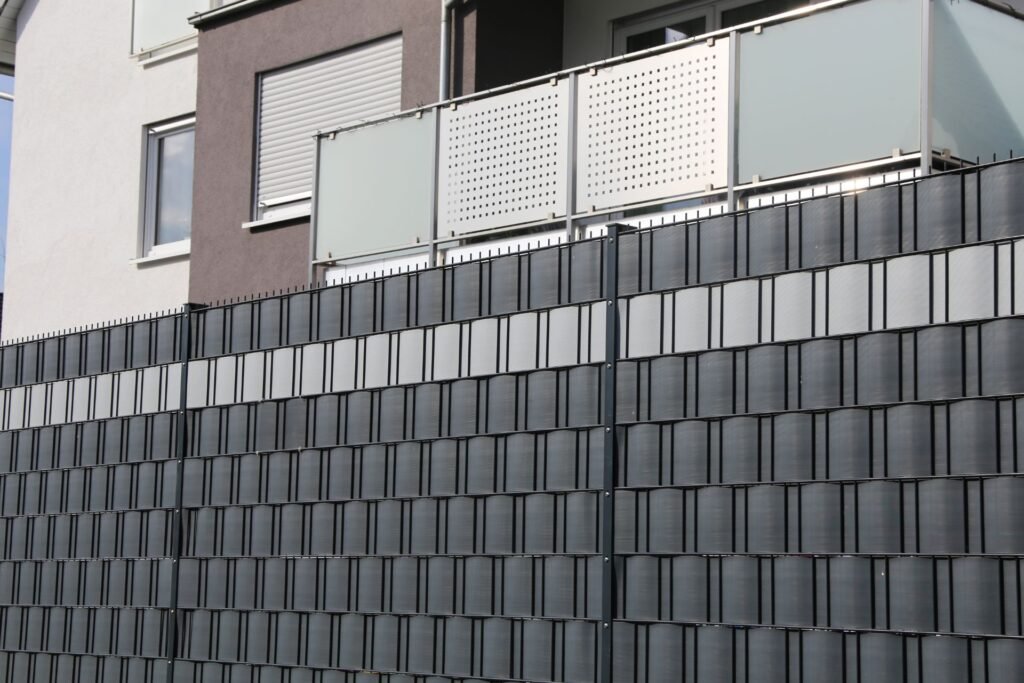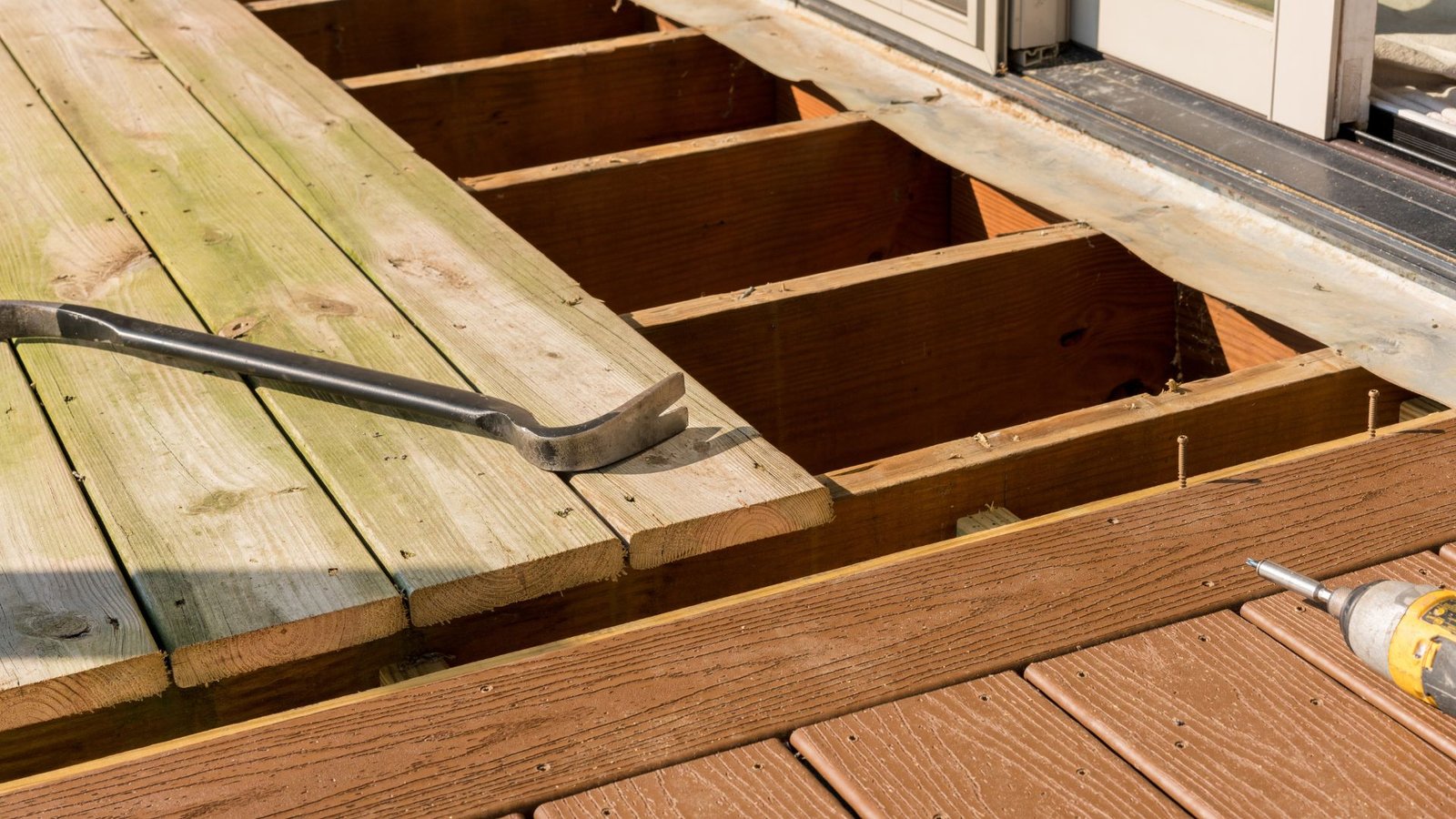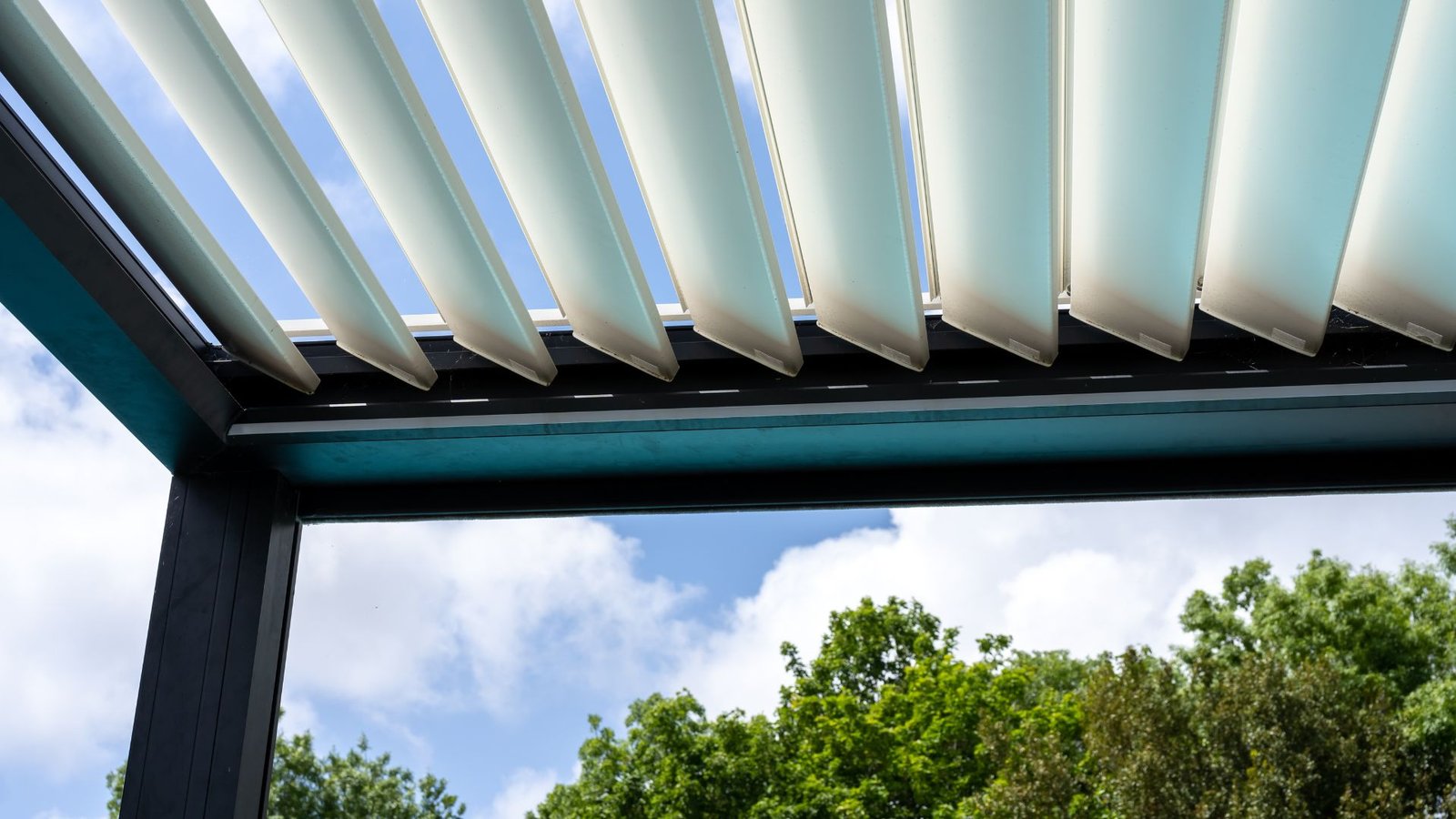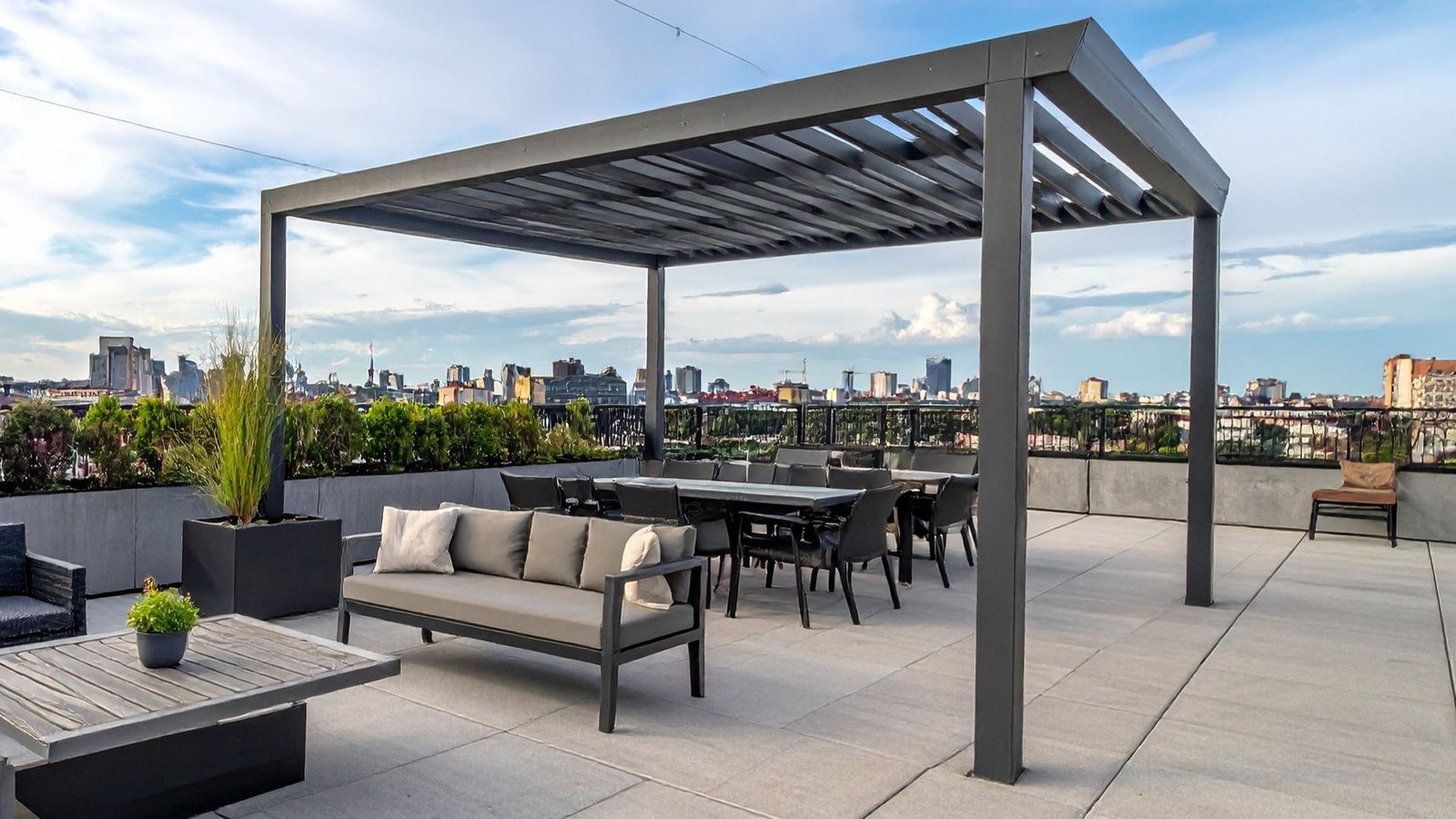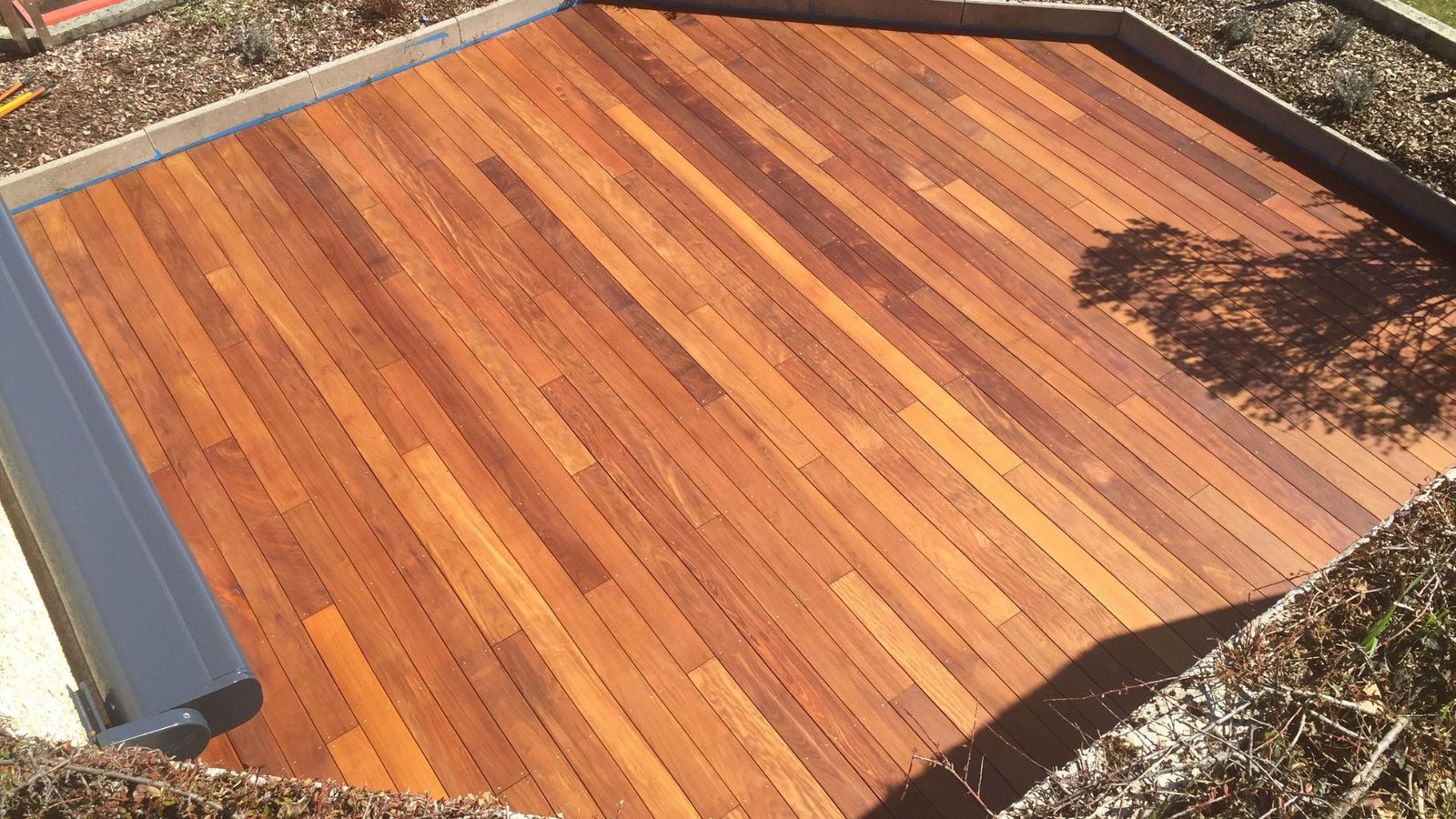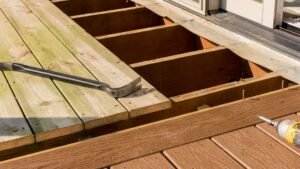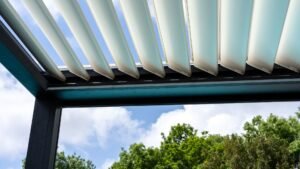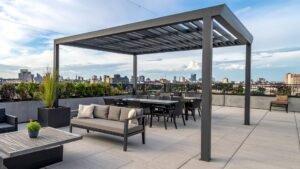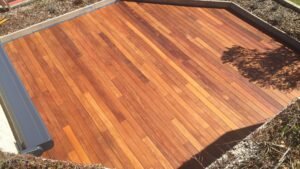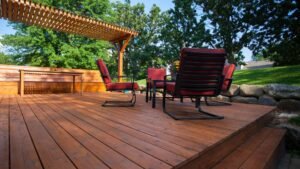Welcome to our comprehensive guide on the best types of fencing in New Zealand! Choosing the right fence for your property is essential, whether you seek privacy, security, aesthetics, or functionality. In this guide, we’ll explore various fencing materials and styles popular in NZ, including timber, metal, vinyl, and innovative options like living fences and gabion walls. We’ll discuss the pros and cons of each, cost considerations, legal requirements, and tips for maintaining your fence. Our goal is to provide you with all the information you need to make an informed decision and enhance the beauty and value of your property.
The best types of fencing in New Zealand include timber, metal, vinyl, and composite options. Timber fences, like paling and picket styles, offer a natural look but require regular maintenance. Metal fences, such as Colorsteel and chain link, provide durability and security. Vinyl fencing is low-maintenance and weather-resistant, while composite fencing is eco-friendly and long-lasting. Innovative solutions like living fences and gabion walls add unique aesthetics and functionality. Consider factors like privacy, security, aesthetics, and budget to choose the ideal fence for your property.
Table of Contents
Understanding Your Fencing Needs
Factors to Consider
- Security: One of the primary reasons for installing a fence is to enhance the security of your property. A sturdy fence can deter intruders and provide a safe boundary for children and pets. Consider the height and durability of the materials when thinking about security to ensure they meet your needs.
- Privacy: If your main concern is to block the view from outside onlookers, privacy fences come in various styles and heights. These are especially popular in residential areas where close proximity to neighbors might be an issue. Materials like wood or composite panels without gaps are ideal for privacy.
- Aesthetics: The look of your fence can dramatically enhance the curb appeal of your property. The style and material of the fence should complement the design of your home and landscape. Whether you prefer a classic wooden fence or a more modern metal option, the choice significantly impacts the overall look of your property.
- Budget: Your budget is crucial in deciding what type of fence you can afford. Prices vary widely based on materials, length, and installation costs. It’s important to get quotes from various suppliers and installers to find the best deal that doesn’t compromise on quality and meets your other fencing needs.
- Maintenance: Consider how much time and effort you are willing to invest in maintaining your fence. Wooden fences require regular staining or painting to prevent decay, while materials like vinyl and aluminum offer a low-maintenance solution, only needing occasional cleaning to look their best.
Common Uses for Fences in NZ
- Residential: In New Zealand, residential fences are commonly used to define property boundaries, increase privacy, and enhance security. They also add aesthetic value to homes, with options ranging from simple timber paling fences to elegant wrought iron.
- Agricultural: Fences are vital in the agricultural sector for containing livestock and marking property lines. Materials like wire and electric are popular choices due to their effectiveness and cost-efficiency.
- Commercial: For commercial properties, security is often the top priority. Robust materials and design, including chain-link, steel, or security mesh, are common to protect assets and premises.
- Decorative: Decorative fences are used to add visual interest and contribute to the landscaping design. These are often less about privacy or security and more about adding a stylish element to gardens or yards.
By carefully considering these factors and common uses, you can choose the right fence that meets all your requirements, ensuring it serves its purpose while enhancing the look and feel of your property. Always take the time to plan and consult with fencing professionals to gain insights and get the best results for your investment.
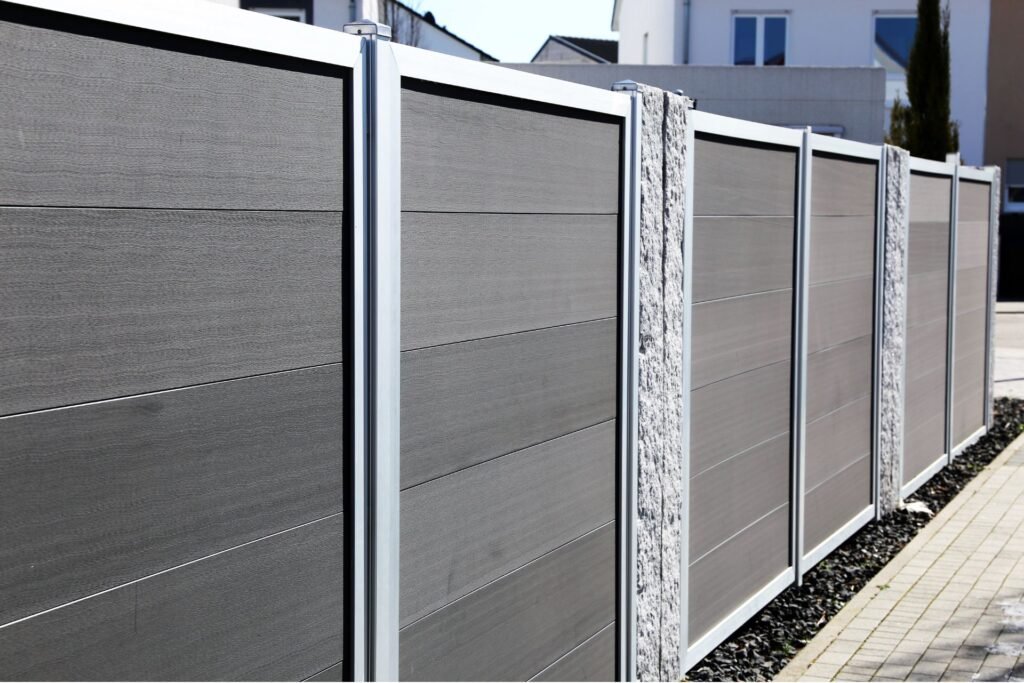
Popular Fencing Materials In NZ
When considering a new fence in New Zealand, homeowners and property managers have several options to choose from. Each material offers unique benefits and drawbacks, tailored to different needs and aesthetics. Here’s a detailed look at some of the most popular fencing materials available in New Zealand, including their advantages and disadvantages.
Timber Fencing
- Pros: Timber is a classic choice for fencing, widely appreciated for its natural appearance which easily blends with outdoor environments. Its versatility is a significant advantage; you can cut and style timber to fit various designs and preferences. Additionally, timber fences are relatively straightforward to personalize through painting or staining, allowing for customization to match any property’s exterior.
- Cons: Despite its aesthetic appeal, timber fencing demands regular maintenance to stay in good condition. Wood is prone to weathering, and without proper treatment, it can rot, warp, or succumb to pest infestations. The cost of high-quality wood (like cedar and redwood), along with ongoing maintenance expenses, can make timber fencing a pricier option in the long run.
Metal Fencing (Steel and Aluminum)
- Pros: Metal fences, particularly those made from steel and aluminum, are celebrated for their durability and strength. They withstand severe weather conditions, are resistant to rust (especially aluminum), and require minimal upkeep compared to wood. Metal fencing is also highly secure, making it an excellent choice for those prioritizing safety.
- Cons: One downside is that metal fencing can be expensive, both in terms of initial material and installation costs. Additionally, while they offer robust security, metal fences generally provide less privacy than their wooden or vinyl counterparts, unless designed with privacy in mind.
Vinyl Fencing
- Pros: Vinyl fencing is a modern alternative that has gained popularity due to its low maintenance requirements and resistance to New Zealand’s fluctuating weather conditions. It does not fade, rot, or get infested by pests. Vinyl comes in a variety of styles and can mimic the appearance of wood without the associated upkeep.
- Cons: The main drawback of vinyl fencing is its higher initial investment compared to some other materials. Moreover, while vinyl is durable in terms of weather resistance, it can be less robust when facing strong physical impacts and may crack under pressure.
Composite Fencing
- Pros: Composite fencing is made from a mixture of wood and plastic, offering an eco-friendly solution to traditional wood fences. This material reduces the need for harvesting new timber, thus conserving forest resources. Composite fences are also known for their longevity and minimal maintenance, not requiring painting or staining.
- Cons: However, composite fencing can be more costly than traditional wood fencing, reflecting its enhanced durability and eco-friendly features. Also, color choices might be more limited compared to wood, which can be a drawback for those looking for specific customizations.
Wire Fencing
- Pros: Wire fencing is an economical choice, particularly suited for expansive rural or agricultural properties. It is relatively easy to install and ideal for enclosing large areas quickly and effectively. Wire fences are practical for keeping livestock within boundaries and are quite durable.
- Cons: The downside to wire fencing is that it offers little to no privacy and might not be as visually appealing for residential properties. It tends to have an industrial look, which may not complement every home’s aesthetic.
Choosing the right fencing material depends on a combination of factors including budget, maintenance preferences, security needs, and aesthetic desires. Each material comes with its own set of pros and cons, making it important to weigh these aspects carefully against your specific requirements and the typical New Zealand climate conditions. Whether you value durability, maintenance ease, or visual appeal, there’s a fencing solution out there to suit every need.
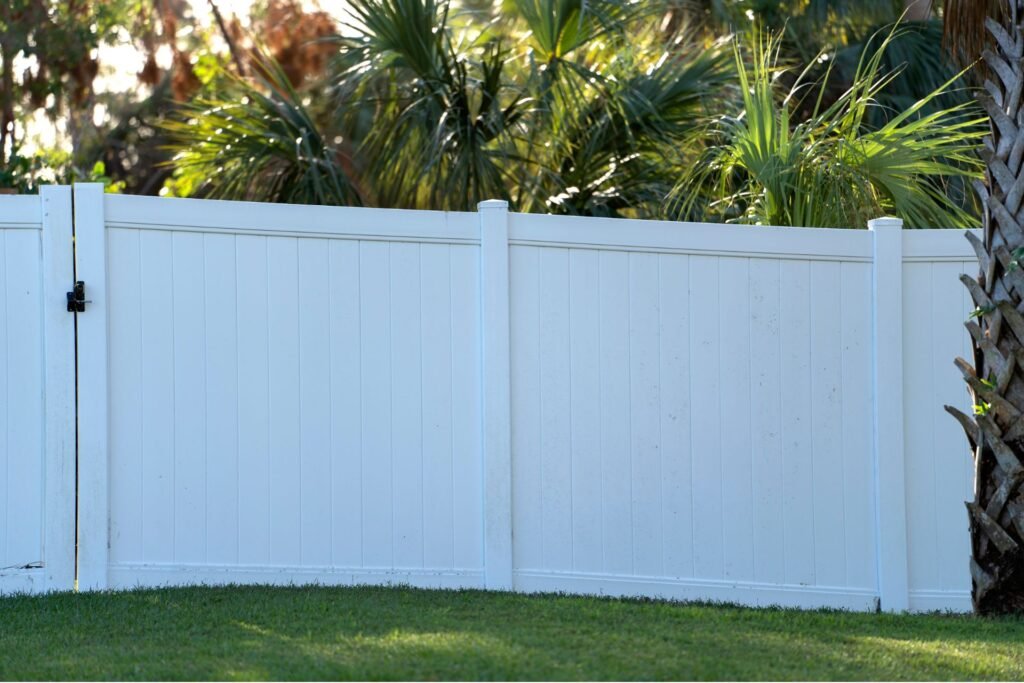
Timber Fencing Options
When it comes to fencing, timber is a preferred choice for many homeowners due to its natural look, durability, and versatility. There are several timber fencing options available, each serving different aesthetic and functional needs. Here, we will explore three popular types of timber fences: Paling Fences, Picket Fences, and Post and Rail Fences.
Paling Fences
Paling fences are a traditional and highly popular choice among homeowners, especially for residential properties. These fences are characterized by vertical timber pales that are tightly spaced to ensure privacy and security. The design of a paling fence makes it an excellent option for delineating property boundaries and adding a layer of privacy to your home.
Ideal Uses: Paling fences are best suited for residential boundaries where privacy is a priority. They blend seamlessly into both urban and suburban landscapes, making them a versatile choice for homeowners looking to create a private outdoor retreat.
Picket Fences
Picket fences are synonymous with the classic American dream. Known for their iconic pointed tops, these fences add a touch of charm and character to any property. Picket fences are typically shorter than privacy fences and feature wider gaps between the vertical slats, offering a decorative way to mark property boundaries without completely obstructing the view.
Ideal Uses: Perfect for front yards, picket fences are primarily used as decorative boundaries. They are an excellent choice for adding aesthetic appeal to your home’s facade. Additionally, picket fences can be used around gardens or walkways, where they serve both a functional and decorative purpose.
Post and Rail Fences
Post and rail fences are distinguished by their simple and rustic appearance, making them a favorite for rural and semi-rural properties. This type of fence is composed of horizontal rails that are fixed between large vertical posts. Unlike privacy fences, post and rail designs are open, offering a clear view through the fence while still marking property boundaries.
Ideal Uses: These fences are ideal for larger properties such as farms or ranches where the main purpose is to contain livestock or mark property lines without obstructing scenic views. They are also commonly used in garden settings to create a quaint, country atmosphere.
Choosing the right timber fencing option depends on your specific needs, whether it’s privacy, aesthetics, or marking boundaries. Paling fences offer privacy and security, picket fences enhance curb appeal, and post and rail fences provide a rustic and open boundary solution. Each has its own place depending on the setting and requirements, ensuring that timber remains a versatile and appealing choice for homeowners.

Metal Fencing Options
When considering fencing options for your property, metal fencing stands out due to its durability and versatility. Among the variety of choices available, two popular types are Colorsteel fences and chain link fences. Each has unique features and ideal uses, making them suitable for different settings.
1. Colorsteel Fences: Modern and Stylish
Colorsteel fencing is a prime choice for those seeking both aesthetics and functionality in their fence. This type of fence is made from steel that is coated with a layer of color, which not only enhances its appearance but also adds to its resistance against weather conditions. The modern look of Colorsteel fences can complement a wide range of architectural styles, making them a versatile option for both residential and commercial properties.
Features and Benefits
- Aesthetic Appeal: The color coating offers a sleek, modern look that can be customized to match your property’s style.
- Durability: Colorsteel is resistant to rust, chipping, and fading, ensuring that your fence remains vibrant and strong for years.
- Low Maintenance: Unlike wood or vinyl, Colorsteel does not require frequent painting or staining, making it a practical choice for busy homeowners.
Ideal Uses
Colorsteel fences are perfect for those who are looking for a visually appealing barrier that does not compromise on security. They are ideally suited for:
- Residential properties: Enhance the curb appeal and security of your home.
- Commercial properties: Offer a professional look while ensuring the property is secure.
2. Chain Link Fences: Economical and Secure
Chain link fences are renowned for their strength and cost-effectiveness. This type of fencing is made from woven steel wire that forms a diamond pattern. Its transparent nature does not obstruct visibility, making it an ideal choice for areas where surveillance is needed. Chain link fences are especially common in commercial settings and sports facilities due to their durability and the security they provide.
Features and Benefits
- Cost-Effective: Chain link fences are affordable and offer great value for the level of security they provide.
- Visibility: The mesh design allows for clear visibility, which is particularly important in public or commercial areas.
- Durability: Made from galvanized or coated steel wire, these fences are designed to withstand harsh conditions without rusting or deteriorating.
Ideal Uses
Chain link fences are a practical choice for:
- Commercial properties: Secure your business premises without sacrificing visibility.
- Sports facilities: Ideal for enclosing areas like tennis courts and baseball fields where visibility is crucial.
Metal fencing, including options like Colorsteel and chain link fences, offers a range of benefits from aesthetic appeal to unmatched durability. Whether you are looking to enhance the security of a commercial property or add a stylish, low-maintenance fence to your home, metal fences provide a reliable and attractive solution. Consider your specific needs and property type when choosing between these options to ensure the best fit for your space.
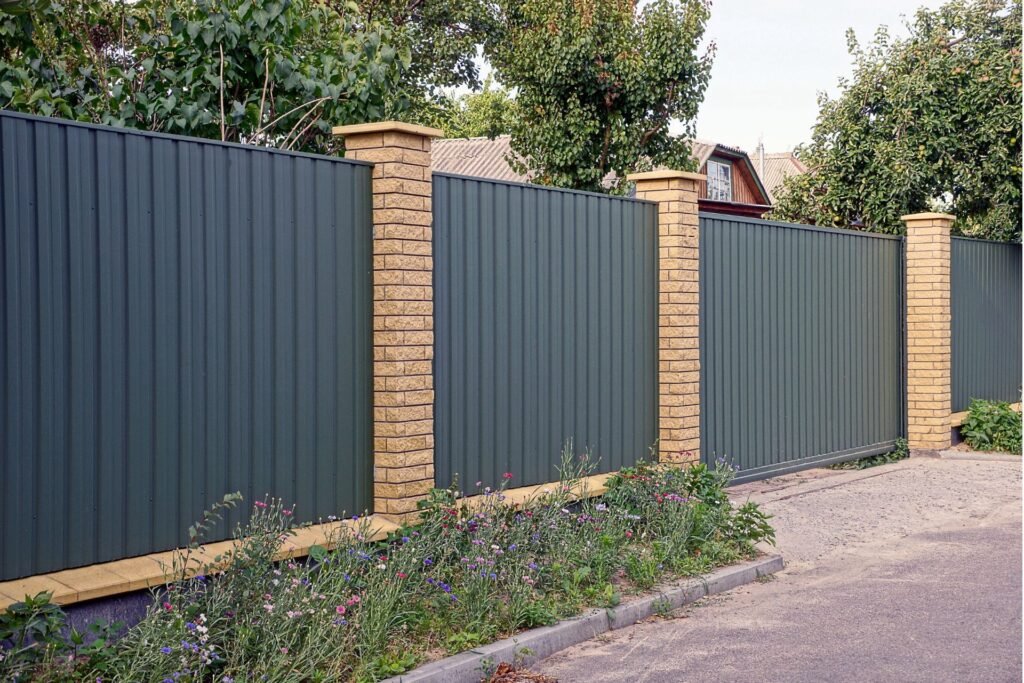
Innovative Fencing Solutions
When it comes to fencing, traditional wood or metal options might first come to mind. However, there are innovative solutions that can not only enhance the aesthetics of your property but also offer unique functional benefits. Let’s delve into two such alternatives: living fences, commonly known as hedges, and gabion walls.
Living Fences (Hedges)
Description: Living fences are exactly what their name suggests—barriers made from living plants. These eco-friendly options integrate seamlessly into garden landscapes, contributing to the overall greenery while serving their purpose as fences.
Pros and Cons
- Pros: Living fences are a beautiful and sustainable choice. They help in improving air quality and providing habitats for wildlife. Being natural, they also add an aesthetic appeal that changes with the seasons, offering year-round visual interest.
- Cons: The primary drawback of living fences is their growth time. Unlike traditional fencing, hedges require several years to establish fully. They also necessitate regular maintenance such as watering, fertilizing, and trimming to maintain their appearance and health.
Ideal Uses: Living fences are ideal for creating privacy screens that do not feel imposing. They are also excellent for demarcating property boundaries in a way that blends with the natural environment, making them perfect for residential areas where a softer, more organic look is desired.
Gabion Walls
Description: Gabion walls are an example of how industrial materials can be used to create striking and functional landscape features. These are made from wire cages that are filled with stones or other durable materials. The result is a highly sturdy and visually intriguing structure.
Pros and Cons
- Pros: Gabions are extremely durable and excellent for soil erosion control, making them a practical choice in environmental conservation efforts. Their robust structure can withstand harsh weather conditions, and they require minimal maintenance once constructed. The aesthetic can be customized based on the type of stones used, allowing for a range of looks from rustic to modern.
- Cons: The initial setup of gabion walls can be labor-intensive and costly, especially if large stones are used or if the area is difficult to access. Additionally, while they are low-maintenance, the metal cages can be susceptible to corrosion over time if not properly treated or if they are in highly saline environments.
Ideal Uses: Gabion walls are particularly effective in sloped areas where erosion control is necessary. They also fit well into modern landscape designs, providing a textural contrast to the surrounding soft plantings. Their structural integrity makes them suitable for public and commercial spaces that require long-lasting fencing solutions.
Both living fences and gabion walls offer distinctive advantages and can be tailored to meet various landscaping needs. Whether you value aesthetics, sustainability, or durability, these innovative fencing solutions can elevate the functionality and style of your outdoor spaces.
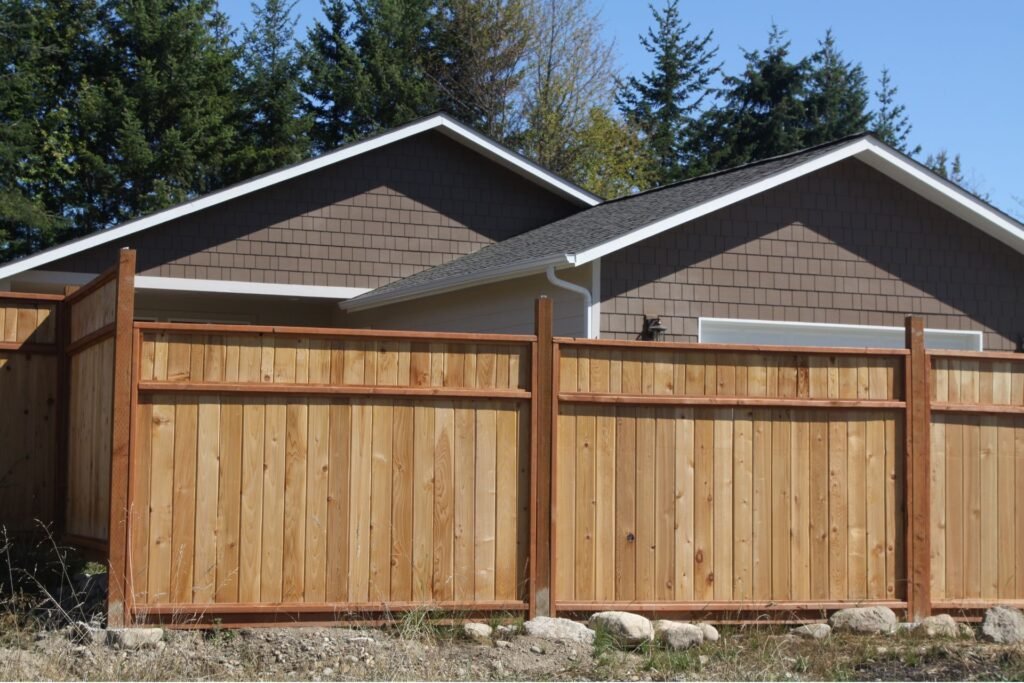
Cost Considerations
When planning to install fencing, understanding the cost implications is crucial. This section delves into the financial aspects of fencing, covering initial costs, long-term maintenance, and the potential return on investment. By exploring these factors, homeowners can make informed decisions that align with their budget and long-term property goals.
Initial Costs
The initial cost of fencing varies significantly depending on the material used, the size of the property, and the complexity of the installation. Here’s a breakdown of typical costs associated with different types of fencing:
- Wood Fencing: Popular for its natural look and privacy, wood fencing costs on average $15 to $30 per foot installed. Prices can escalate for high-quality woods like cedar or redwood.
- Vinyl Fencing: Known for its durability and low maintenance, vinyl fencing costs between $20 to $40 per foot installed. It’s a bit pricier initially but can be cost-effective over time due to minimal upkeep needs.
- Aluminum or Steel Fencing: Ideal for security and durability, metal fences can cost anywhere from $20 to $50 per foot, depending on the style and height.
- Chain Link Fencing: The most economical option, chain link fences cost about $10 to $20 per foot installed, making them an excellent choice for large areas.
It’s also important to consider additional costs like gates, terrain adjustments, and labor which can affect the overall price.
Long-term Maintenance
Maintaining a fence is critical to preserving its appearance and functionality over the years. Different materials require varying levels of upkeep:
- Wood Fencing: Requires regular treatments like painting or staining and can be susceptible to weather damage and rot.
- Vinyl Fencing: Needs little more than occasional cleaning with soap and water, resisting weathering well without needing paint or sealant.
- Metal Fencing: May need rust protection every few years, especially in humid climates, but generally remains sturdy with minimal care.
- Chain Link Fencing: Needs periodic tightening and rust protection but is otherwise low maintenance.
Factoring these maintenance needs into the initial decision will help ensure that the fence continues to meet your needs and preferences without unexpected future expenses.
Return on Investment
Installing the right fence can also add significant value to your property by enhancing curb appeal, providing security, and improving privacy. Potential buyers often look for properties that offer added security and privacy, which can be a decisive factor in real estate transactions. Moreover, an aesthetically pleasing fence can dramatically enhance the look of your property, making it more attractive to potential buyers.
- Privacy and Wooden Fences: These are particularly valuable in suburban areas where homeowners value privacy.
- Decorative Metal Fences: They can enhance the architectural style of your home, appealing to buyers looking for design consistency.
- Vinyl and Chain Link Fences: While not as high on the aesthetic side, they offer functional benefits that are highly valued in areas where security and low maintenance are priorities.
In conclusion, when considering the installation of a fence, weigh the upfront costs against the long-term maintenance and potential enhancement in property value. Choosing the right type of fencing can not only fulfill your immediate needs but also contribute to the financial and aesthetic value of your home in the long run.

Legal And Environmental Considerations
When considering the installation of a new fence or replacing an old one, it’s essential to navigate the legal and environmental implications meticulously. This section delves into the local regulations that govern fencing projects and explores environmentally responsible choices that can mitigate your ecological footprint.
Local Regulations
Understanding and adhering to local council regulations is a cornerstone of planning your fencing project. Each local council may have distinct rules regarding the height, style, and materials of fences, as well as specific guidelines on how close a fence can be built to property boundaries. These regulations are in place to ensure safety, privacy, and aesthetic standards within the community.
Before you commence any fencing project, it’s advisable to visit your local council’s website or contact them directly to acquire the necessary permits and guidelines. This step will not only keep you compliant but also prevent potential disputes with neighbors and avoid costly modifications down the line. For instance, some areas might require a certain type of fencing for historic districts or waterfront properties, ensuring that the character and views of the area are preserved.
Environmental Impact
The environmental impact of fencing is significant and worth considering. Opting for sustainable materials can reduce your environmental footprint while still achieving the desired aesthetic and functional outcomes. Materials such as bamboo, recycled plastic, or sustainably sourced wood are excellent options that are both eco-friendly and durable.
Recycling old fences is another crucial aspect of reducing waste. When dismantling an old fence, consider how materials can be reused or recycled. Wood from an old fence, for instance, can be repurposed for garden projects like compost bins or flower boxes. Alternatively, many companies specialize in recycling building materials and can ensure that your old fence is disposed of responsibly.
Moreover, incorporating green practices doesn’t stop at material selection. The method of installation can also have environmental impacts. For example, using manual tools instead of heavy machinery can reduce carbon emissions and soil disruption during the construction process.
In summary, the legal and environmental considerations of fencing are integral to a successful and responsible project. By understanding local regulations and making eco-conscious choices, you can ensure that your fencing not only meets legal standards but also contributes positively to environmental sustainability.
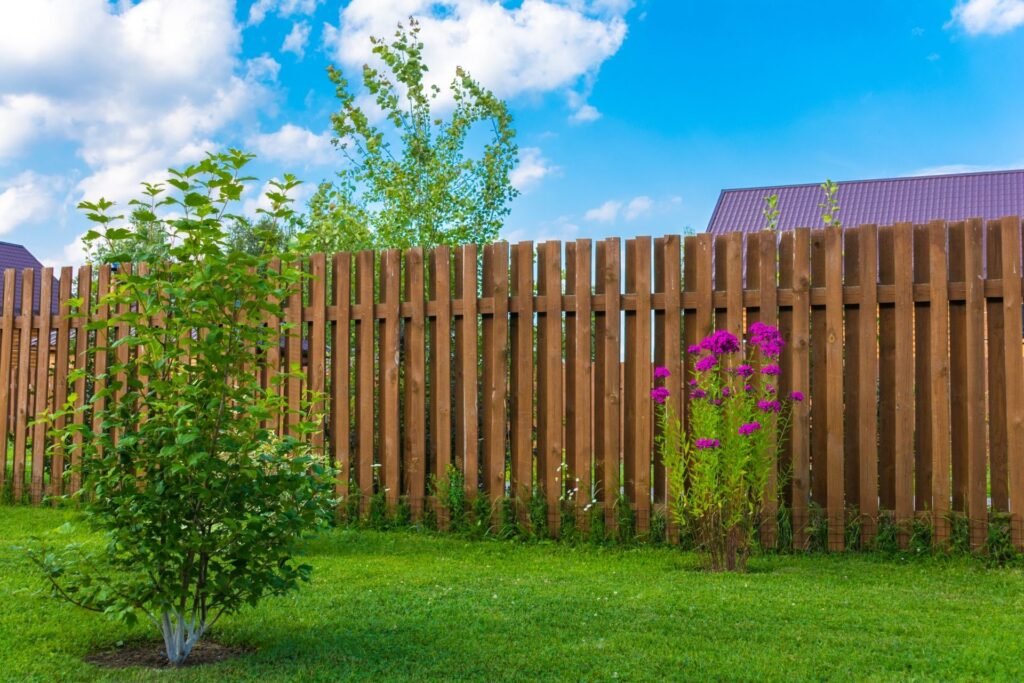
Choosing The Right Fence For Your Property
Selecting the perfect fence for your property is a crucial decision that can impact your home’s privacy, security, and overall aesthetic appeal. Let’s delve into the key considerations to ensure you make an informed choice.
Assessing Your Needs
Before diving into the various fencing options available, it’s essential to evaluate your specific requirements. Start by asking yourself what you need the fence for. Are you looking for enhanced privacy from neighbors, added security to keep intruders out, or simply a beautiful addition to your landscaping?
1. Privacy: If privacy is your main concern, consider fences that offer full coverage, such as wooden or vinyl options. These materials can create a solid barrier between your property and the outside world, ensuring your backyard remains a private sanctuary.
2. Security: For those prioritizing security, metal fences like wrought iron or aluminum are excellent choices. These fences are sturdy and durable, acting as a strong deterrent to potential intruders.
3. Aesthetic Preferences: If aesthetics are at the forefront of your decision, think about how the fence will complement your home’s architectural style and landscape design. Picket fences, for example, can add a charming, classic look, while modern steel or composite fences offer sleek, contemporary appeal.
Consulting with Professionals
Once you have a clear understanding of your needs, it’s wise to consult with fencing professionals. These experts can provide invaluable advice tailored to your specific situation. Here’s why professional consultation is important:
1. Expert Insight: Professionals have extensive experience and knowledge about various fencing materials, styles, and installation techniques. They can recommend the best options based on your requirements and budget.
2. Local Regulations: Fencing experts are familiar with local building codes and regulations. They can help ensure that your fence complies with all legal requirements, avoiding potential fines or issues down the road.
3. Customized Solutions: A professional can offer customized solutions that you might not have considered, enhancing both functionality and aesthetics. They can also provide accurate cost estimates, helping you plan your project more effectively.
DIY vs Professional Installation
After consulting with professionals, you’ll need to decide whether to tackle the installation yourself or hire a professional. Each approach has its pros and cons.
1. DIY Installation:
Pros
- Cost Savings: Doing it yourself can save you money on labor costs.
- Personal Satisfaction: There’s a sense of accomplishment in building something with your own hands.
Cons
- Time-Consuming: DIY projects can take much longer, especially if you lack experience.
- Skill Requirements: Installing a fence requires specific skills and tools. Mistakes can be costly to fix.
2. Professional Installation
Pros
- Efficiency: Professionals can complete the job quickly and efficiently.
- Quality: A professionally installed fence is likely to be sturdier and more durable.
- Warranty: Many professional services offer warranties on their work, providing peace of mind.
Cons
- Higher Cost: Hiring a professional can be more expensive upfront.
In conclusion, choosing the right fence involves a careful assessment of your needs, consulting with experts, and deciding on the installation method that best suits your situation. Whether you prioritize privacy, security, or aesthetics, taking these steps will help you find the perfect fence for your property.
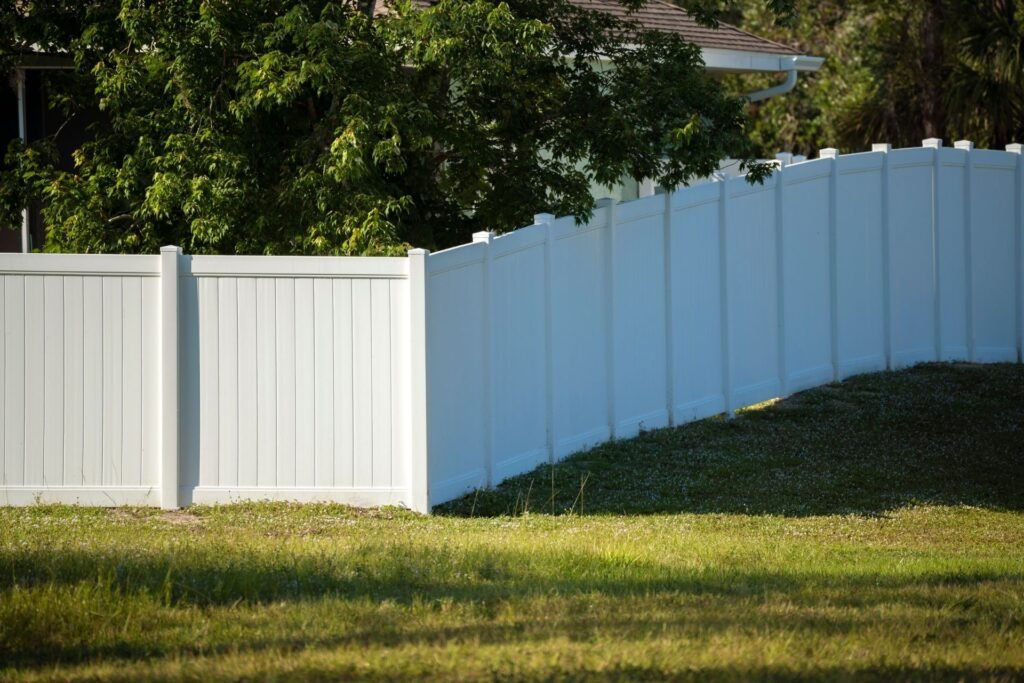
Case Studies And Examples
Case studies provide real-world examples of how fencing projects can transform properties, offering valuable insights for potential customers. In this section, we will explore two detailed case studies: one focusing on a residential project and the other on a commercial property. These examples will highlight the specific challenges faced, solutions implemented, and the outcomes achieved.
Residential Case Study: Transforming a Suburban Backyard
In this residential case study, we look at a suburban backyard in Auckland that needed a complete fencing overhaul. The homeowners wanted a balance between privacy and aesthetic appeal. They faced several challenges:
1. Privacy Concerns: The old fence was dilapidated and provided minimal privacy from neighboring houses.
2. Aesthetic Appeal: The homeowners wanted the new fence to complement their modern house design.
3. Durability: Given the weather conditions in Auckland, they needed a fence that could withstand heavy rain and strong winds.
- Solution: After consulting with a professional fencing company, the homeowners decided on a treated timber fence. This material was chosen for its durability and natural look, which matched the house’s exterior. The design included horizontal slats to create a modern, sleek appearance.
- Implementation: The project began with the removal of the old fence and the clearing of the boundary line. The new fence was then installed, featuring concrete posts for added stability. The fencing team worked meticulously to ensure the slats were evenly spaced, providing both privacy and a sense of openness.
- Outcome: The result was a stunning fence that offered complete privacy while enhancing the visual appeal of the property. The homeowners were thrilled with the transformation, noting that the new fence also increased their home’s value.
Commercial Case Study: Securing a Business Complex
This commercial case study involves a business complex in Wellington that required a robust fencing solution to enhance security and delineate property boundaries. The key challenges were:
1. Security: The complex housed several offices, and security was a top priority.
2. Maintenance: The business needed a low-maintenance fencing solution to minimize upkeep costs.
3. Professional Appearance: The fence needed to project a professional image to clients and visitors.
- Solution: The fencing company recommended a combination of steel and mesh fencing. Steel was chosen for its strength and durability, while the mesh design allowed for visibility, ensuring the property remained open and inviting.
- Implementation: The project started with a thorough site assessment to identify potential security vulnerabilities. The old, worn-out fence was dismantled, and the new steel and mesh fence was erected. The team ensured that the installation met all local regulations and standards for commercial properties.
- Outcome: The new fence significantly improved security, deterring unauthorized access and providing peace of mind for the business owners. It also required minimal maintenance, thanks to its durable materials. Clients and visitors appreciated the professional look of the new fence, which reflected the high standards of the business complex.
These case studies demonstrate how tailored fencing solutions can address specific needs and challenges, whether for residential or commercial properties. By sharing these examples, we hope to inspire and inform potential customers about the possibilities and benefits of investing in quality fencing. If you’re considering a fencing project, these case studies underscore the importance of working with experienced professionals to achieve the best results.

Tips For Maintaining Your Fence
Maintaining your fence is essential for ensuring its longevity and keeping it looking great. Proper maintenance can save you money in the long run by preventing costly repairs or replacements. Here are some valuable tips to help you keep your fence in top condition.
Regular Inspections
Regular inspections are crucial for identifying any damage or wear and tear early on. Walk along the length of your fence at least once every few months, looking for signs of damage such as broken or missing boards, rusted nails, or loose posts. Pay attention to the base of the fence where moisture can accumulate, potentially causing wood rot or metal corrosion. Catching these issues early can prevent them from becoming bigger, more expensive problems.
Cleaning and Repairs
Cleaning your fence is not just about aesthetics; it’s also about preserving its structural integrity. Different types of fences require different cleaning methods:
- Wooden Fences: Use a power washer or a garden hose with a high-pressure nozzle to remove dirt and debris. For mold or mildew, a mixture of bleach and water can be effective. After cleaning, inspect for any signs of rot or damage and replace any damaged boards or panels. Seal or stain the wood to protect it from the elements.
- Vinyl Fences: Vinyl fences are relatively low maintenance. Use a mixture of water and mild detergent to clean them, scrubbing with a soft brush. Rinse thoroughly with a hose. Check for any cracks or breaks and repair them promptly to prevent further damage.
- Metal Fences: Metal fences, particularly those made of wrought iron, can rust over time. Use a wire brush to remove rust and then apply a rust-inhibiting primer and paint. Regularly check for loose or missing screws and bolts and tighten or replace them as needed.
Seasonal Maintenance
Each season brings different challenges for fence maintenance. Preparing your fence for these seasonal changes can prevent damage and extend its lifespan:
- Spring: Spring is a good time for a thorough inspection and cleaning after the harsh winter months. Look for any damage caused by snow and ice. Reapply any protective coatings or sealants as needed.
- Summer: During summer, the hot sun can cause wood to dry out and crack. Keep an eye out for signs of sun damage and apply a UV-resistant sealant to wooden fences. Ensure plants and vines are not growing too closely to the fence, as they can trap moisture and cause damage.
- Fall: In the fall, clear away leaves and debris that can accumulate at the base of the fence and trap moisture. This is also a good time to make any necessary repairs before the winter weather sets in.
- Winter: Prepare your fence for winter by trimming back any overhanging branches that could fall and damage the fence during a storm. For wooden fences, ensure they are properly sealed to prevent moisture absorption from snow and rain.
By following these tips for regular inspections, cleaning and repairs, and seasonal maintenance, you can keep your fence looking its best and ensure it lasts for many years. Taking the time to care for your fence will not only enhance the appearance of your property but also provide the security and privacy you need.
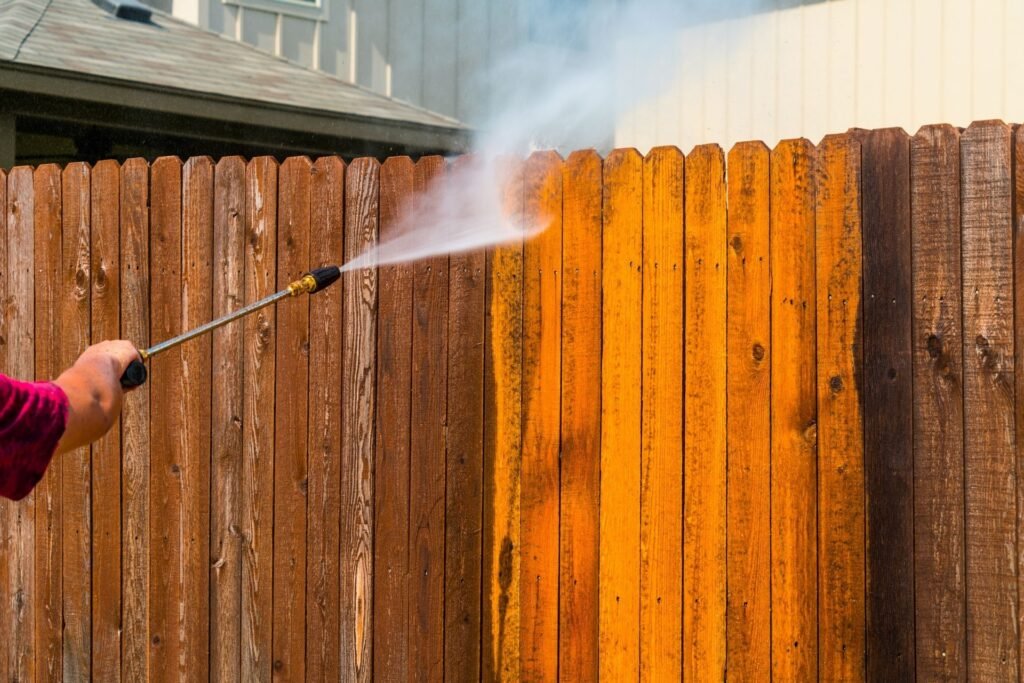
FAQs: About Best Types Of Fencing NZ
What are the most popular types of fencing in New Zealand?
The most popular types of fencing in New Zealand include timber, metal, vinyl, composite, wire, and innovative solutions like living fences and gabion walls. Each type has its own benefits and is suited for different needs and preferences.
What are the advantages of timber fencing?
Timber fencing offers a natural and versatile look, can be easily painted or stained, and suits various styles. However, it requires regular maintenance to prevent rot and weather damage.
How durable is metal fencing compared to other types?
Metal fencing, including steel and aluminum, is highly durable and low-maintenance, making it a good option for security and longevity. It is more resistant to weather and pests compared to timber.
Is vinyl fencing a good option for New Zealand’s climate?
Yes, vinyl fencing is weather-resistant, low-maintenance, and durable, making it a great option for New Zealand’s varying climate. It does not rot or rust and comes in various styles and colors.
What is composite fencing, and why is it popular?
Composite fencing is made from recycled wood fibers and plastic. It is eco-friendly, durable, and low-maintenance. Its long-lasting nature and minimal upkeep make it a popular choice.
What are the benefits of wire fencing?
Wire fencing is affordable, easy to install, and suitable for agricultural and rural settings. It provides a clear boundary without obstructing views but offers less privacy than other types.
How do living fences work, and what are their benefits?
Living fences are made from plants or hedges, providing a natural, eco-friendly boundary. They offer privacy, enhance aesthetics, and can improve biodiversity. However, they require time to grow and regular maintenance.
What are gabion walls, and where are they typically used?
Gabion walls consist of wire cages filled with stones or other materials. They are durable, offer unique aesthetics, and are good for erosion control. They are typically used in modern landscapes and sloped areas.
How much does fencing cost in New Zealand?
The cost of fencing varies widely depending on the material, size, and complexity of the installation. Timber and wire fences are generally less expensive, while metal, vinyl, and composite fences tend to be pricier.
What should I consider when choosing a fence for my property?
When choosing a fence, consider factors such as privacy, security, aesthetics, budget, maintenance, and local regulations. Assess your specific needs and consult with fencing professionals to find the best option for your property.
Conclusion
In conclusion, let’s recap the main points discussed in this blog post about choosing the best fence for your property. We explored various fencing options, each with unique benefits and considerations, from cost and durability to aesthetic appeal and maintenance needs. As you make your decision, remember to consider factors like the primary purpose of your fence, the climate in your area, and your long-term maintenance plans. For the best results, seek personalized advice and quotes from local fencing professionals who can tailor their recommendations to your specific needs. Don’t hesitate to reach out to experts who can guide you through the selection process and ensure you make an informed choice that enhances both the functionality and appearance of your property.
About the Author:
Mike Veail is a recognized digital marketing expert with over 6 years of experience in helping tradespeople and small businesses thrive online. A former quantity surveyor, Mike combines deep industry knowledge with hands-on expertise in SEO and Google Ads. His marketing strategies are tailored to the specific needs of the trades sector, helping businesses increase visibility and generate more leads through proven, ethical methods.
Mike has successfully partnered with numerous companies, establishing a track record of delivering measurable results. His work has been featured across various platforms that showcase his expertise in lead generation and online marketing for the trades sector.
Learn more about Mike's experience and services at https://theleadguy.online or follow him on social media:

